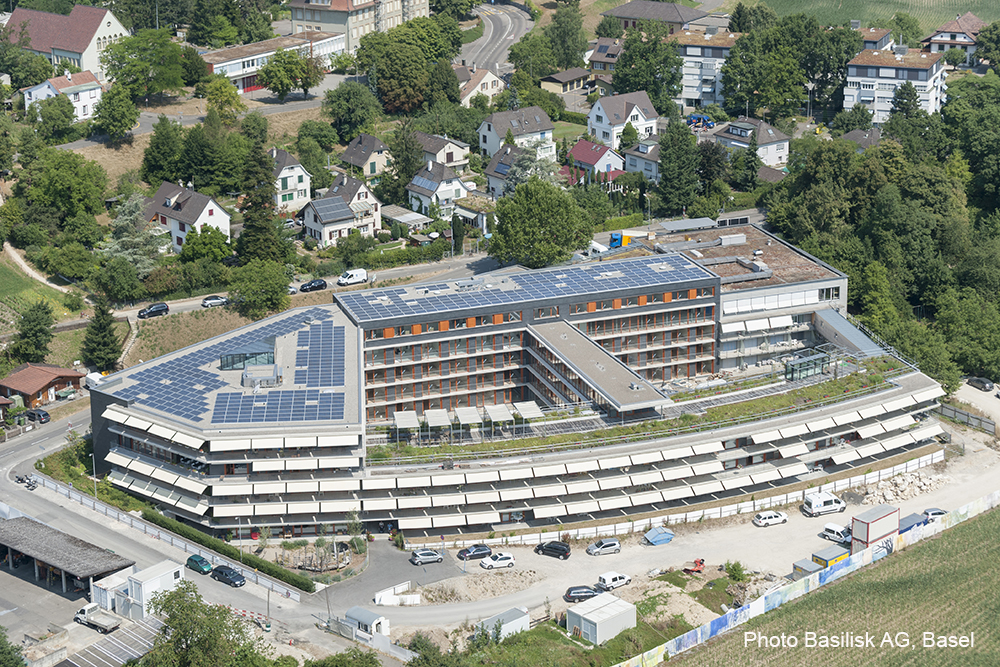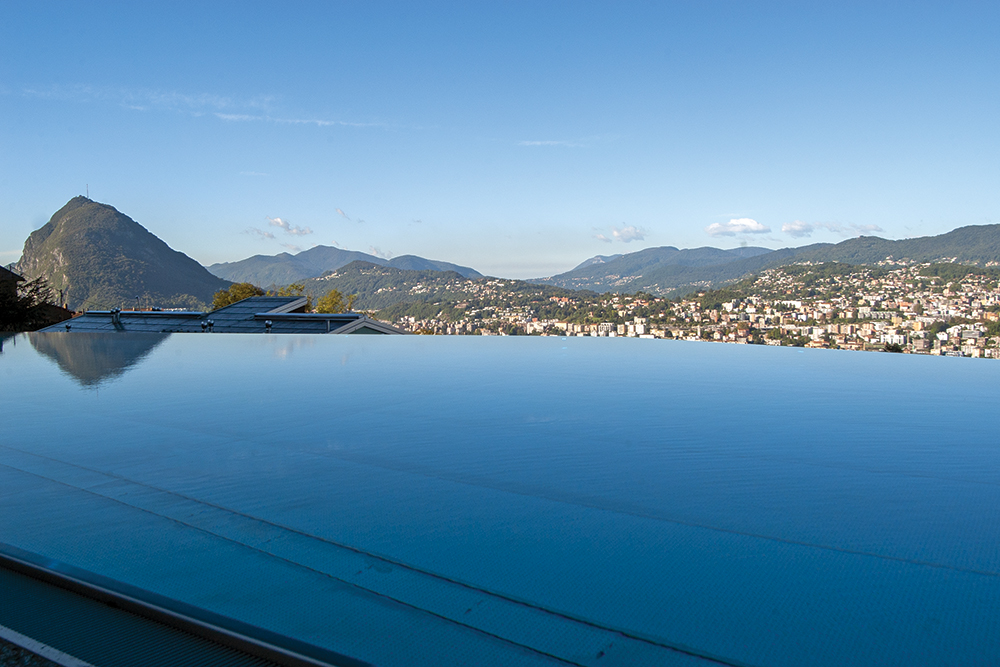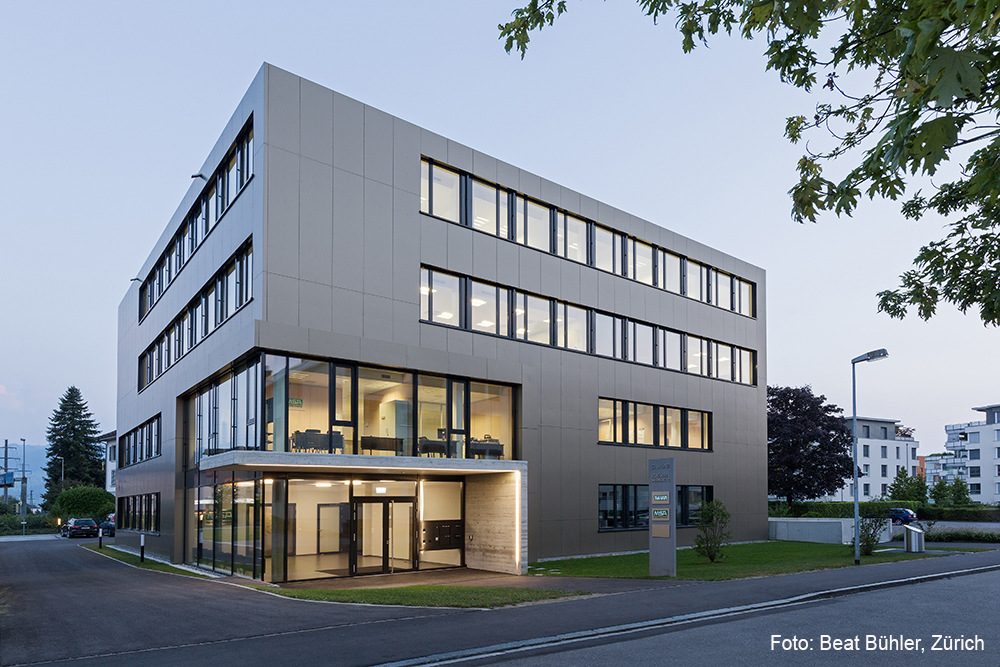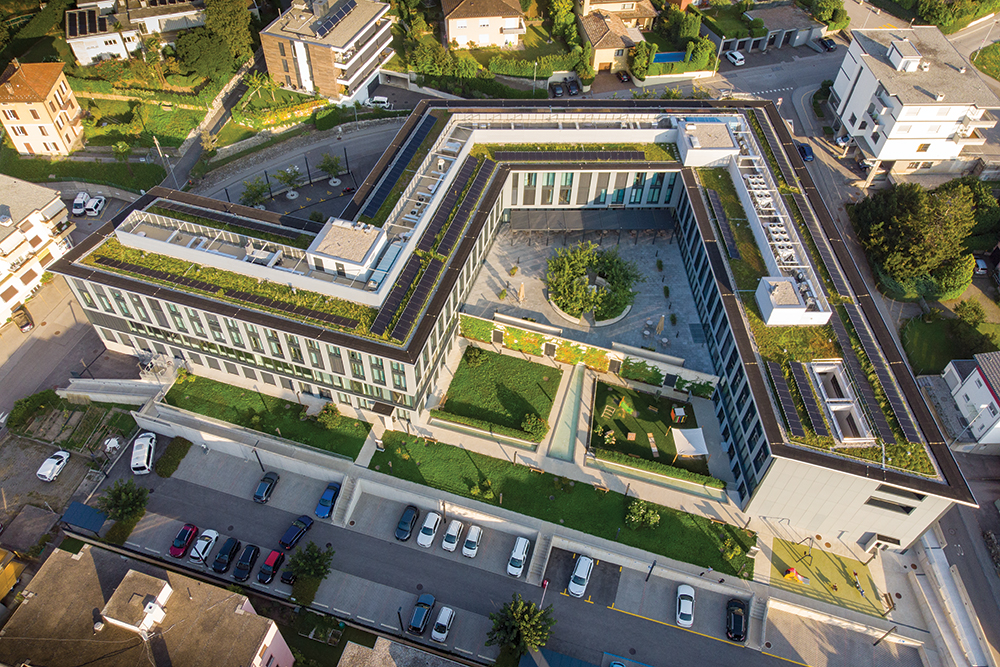Drytech realised the waterproofing of the lift shafts and perimeter walls of the new buildings integrating the renovation of a historical industrial site in Baden.
‘We were strongly oriented towards the prevailing industrial history of the Trafo site and took care to sensitively integrate the new building emerging from Hall 38 into the existing context,’ says architect Roger Biscioni.
The project recovered three industrial warehouses, transforming them respectively into a covered square, a structure housing an 80-room hotel and flats, and finally a pavilion housing a fitness centre with hammam, cinema and restaurants.
The intervention is also characterised by the 660 coloured windows by Swiss artist Ugo Rondinone, which give the impression of an industrial cathedral. Just as the large chandeliers in Hall 36, with their design inspired by the fuses of industrial transformers, enhance the history of the site.
The Drytech Tank, with its construction flexibility, allowed the waterproofing to be perfectly adapted to the requirements of a renovation of this complexity.
Owner: Baugenossenschaft Trafo II, c/o Eglin Immobilien AG, Baden
Contactor: Gross GU AG, Brugg
Structur: MWV Bauingenieure AG, Baden
Project:
Graf Biscioni Architektur GmbH, Winterthur,
Max Müller Architekt BSA SWB, Baden
Builders: Estermann AG, Geuensee
Waterproofing: Drytech Schweiz









